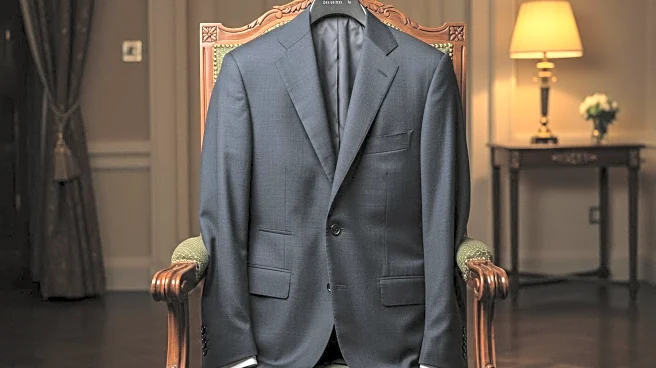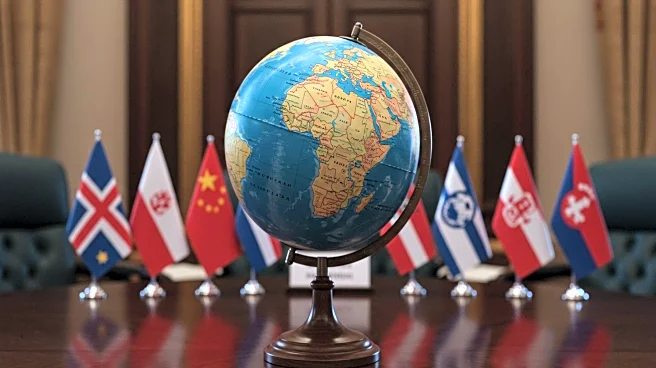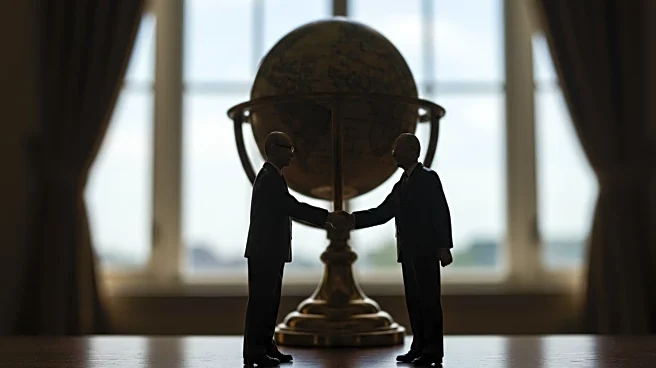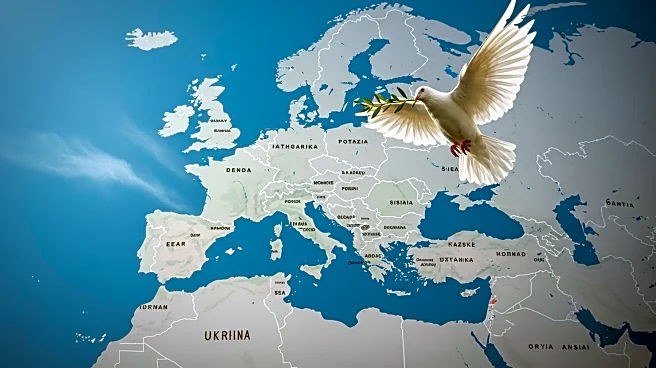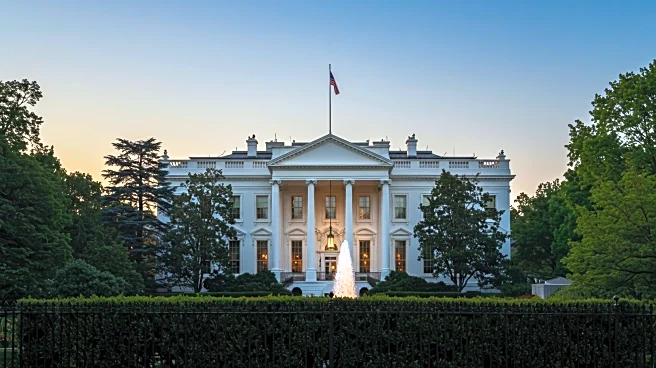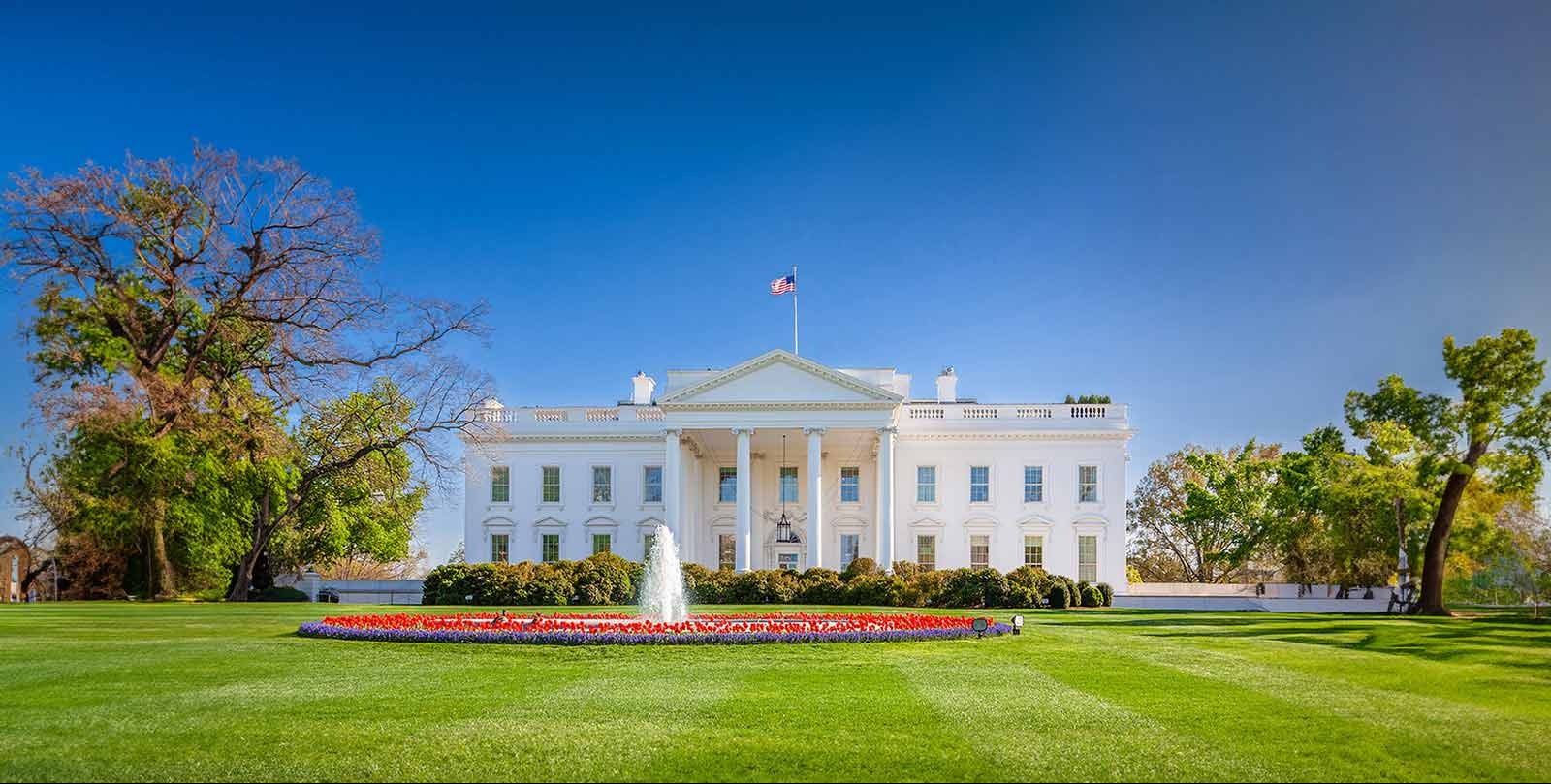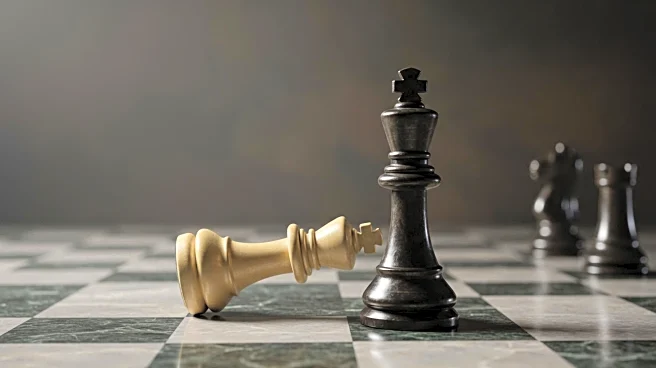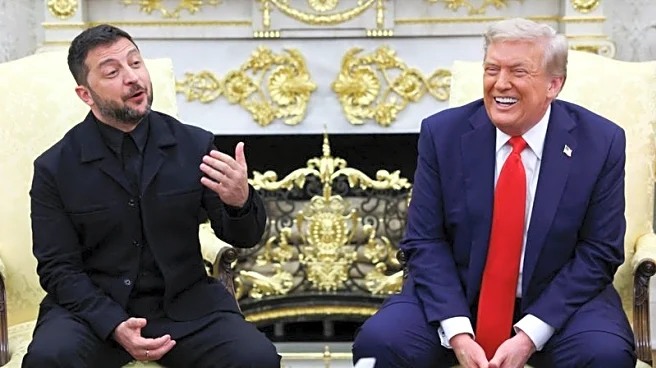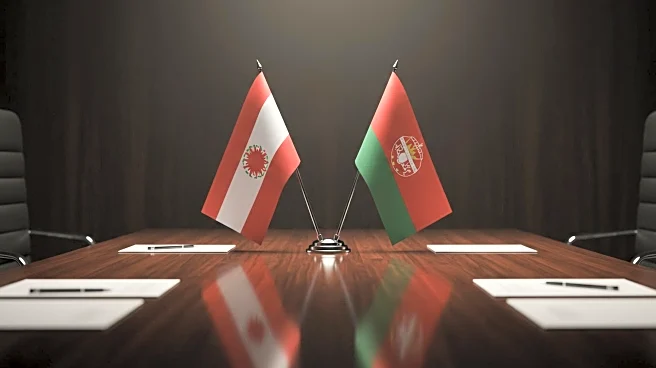What's Happening?
Ukrainian President Volodymyr Zelenskyy recently visited the White House, where he received compliments from President Trump and the press for his formal attire. The outfit, designed by Viktor Anisimov, marked a shift from Zelenskyy's usual military-style clothing, which he has worn since Russia's invasion of Ukraine. Despite criticism from pro-Trump reporter Brian Glenn earlier this year for not wearing a suit, Zelenskyy maintained his preference for military attire until the war's conclusion. Anisimov clarified that the new wardrobe was not a response to the previous White House meeting but part of a gradual shift towards a civilian style while retaining military references. Zelenskyy's attire during the visit was a French-style army jacket paired with coordinating trousers, which Glenn mistakenly identified as a suit.
Why It's Important?
The change in Zelenskyy's attire signifies a potential shift in diplomatic strategy and image as Ukraine continues to navigate its relationship with the U.S. and other global powers amid ongoing conflict with Russia. The focus on Zelenskyy's clothing highlights the intersection of fashion and politics, where personal presentation can influence perceptions and diplomatic interactions. This development may impact how Zelenskyy is perceived by international leaders and the public, potentially affecting Ukraine's diplomatic efforts and negotiations.
What's Next?
Zelenskyy's continued engagement with global leaders, including President Trump, will likely focus on securing support for Ukraine's sovereignty and addressing the ongoing conflict with Russia. The shift in attire may be part of broader efforts to strengthen diplomatic ties and garner international backing. Future meetings and summits will be crucial in determining the effectiveness of these strategies and the potential for resolving the conflict.
Beyond the Headlines
The emphasis on Zelenskyy's clothing choice underscores the role of personal branding in political leadership. As leaders navigate complex geopolitical landscapes, their image can influence public perception and diplomatic relations. This development may prompt discussions on the importance of personal presentation in politics and its impact on international diplomacy.
